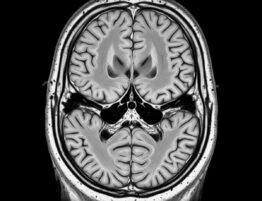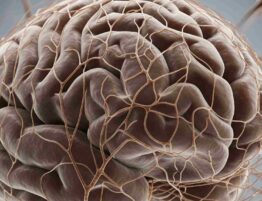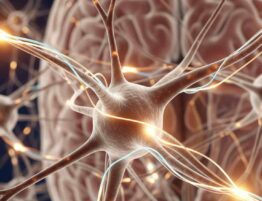This illness is a highly contagious illness. It can lead to severe side effects on a person’s organism. It’s especially dangerous in high-risk groups. To fight the distribution and mitigate the impact, many ways of avoiding and curing have been developed.
Our article will delve into the key tactics for avoiding and healing. We will explore:
- The importance of immunization.
- The role of your hygiene and environmental measures.
- The available meds.
By understanding these methods, one can take proactive steps for flu treatment at home. They will help to protect relatives and organism.
Understanding Influenza
It’s a respiratory illness caused by germs. They constantly evolve. It leads to new strains and variants. Signs often include:
- Fever.
- Cough.
- Sore throat.
- Muscle aches.
- Fatigue.
- Congestion.
Most cases are mild. However, some can lead to severe side effects.
Understanding the nature of flu symptoms and treatment is crucial. By knowing how it spreads and what contributes to severe forms, one can take the right measures. Those are to save you and your communities.
What Is the Flu?
It’s an illness caused by germs. These ones constantly change. It leads to new strains and variants each year. The illness is spread through droplets in the air when an infected person coughs or sneezes. It can also be transmitted by touching a contaminated surface and then touching your face.
Symptoms and Complications
Among the flu symptoms and treatment needs are:
- High/low temperature.
- Cough.
- Sore throat.
- Muscle aches.
- Fatigue.
- Headache.
- Runny or stuffy nose.
- Sneezing.
- Nausea and vomiting (more common in children).
Side effects can include:
- Pneumonia.
- Bronchitis.
- Sinusitis.
- Ear infections.
- Dehydration.
- Worsening of existing chronic states.
In severe cases, it all can lead to hospitalization and even death.
Flu Prevention
Avoiding is key when it comes to this illness. There are some working ways to avoid the distribution of germs.
Vaccination
The most effective way is immunization. Grippe shots are available every year. And they can significantly reduce your risk of contracting the grippe. It’s especially important for high-risk groups.
It’s not only beneficial for your protection, but it also contributes to herd immunity. When a large percentage of the people is vaccinated, it makes it more difficult for the germs to spread. It protects those who cannot use immunization or who are particularly vulnerable to germs.
Non-vaccination Methods of Prevention
In addition, there are several other steps one can take for flu prevention:
- Wash your hands frequently. This is one of the most important ways to avoid the spread of germs. Use soap and water. And wash hands for at least 20 seconds.
- Cover your cough and sneeze. When coughing or sneezing, use a tissue to cover your mouth and nose. If you don’t have a tissue, cough or sneeze into your elbow.
- Avoid close contact with sick people. If possible, stay away from people who are sick.
- Clean and disinfect surfaces. Grippe can live on surfaces for up to 24 hours. Regularly clean and disinfect surfaces that are frequently touched. They are door handles, keyboards, and phones.
- Stay home if you are sick. If you are sick, stay home from work or school to avoid distributing the germs to others.
Strengthen The Immune System
Here are some tips for strengthening your protection system for cold and flu prevention:
- Eat a nutritional diet. Choose a diet rich in fruits, vegetables, whole grains, and lean protein. It can provide your body with the nutrients it needs to function properly.
- Get enough sleep. Aim for 7-8 hours of sleep each night to help your body rest and recharge.
- Manage stress. Stress can weaken your body systems. Practice relaxation techniques. They are meditation or yoga to help manage stress.
- Exercise regularly. Regular physical activity can help boost your body systems. Aim for at least 30 min of moderate-intensity exercise most days of the week.
Treatment of Influenza
Unfortunately, there’s no known cure for it. However, many flu treatments are available to alleviate signs and cut side effects. Those often include over-the-counter meds like pain relievers and decongestants. It’s to manage fever, aches, and congestion. In severe cases, antiviral drugs may be prescribed to shorten the duration of the illness and reduce the risks. It’s especially in high-risk populations such as the elderly and those with underlying states.
Antiviral Drugs
Antiviral drugs are meds that can help shorten the duration of illness and reduce the signs. They are most effective when taken within the first 48 hours of illness onset.
Several antiviral drugs for flu treatment include:
- Oseltamivir. This is one of the most commonly prescribed antiviral drugs. It can shorten the duration of signs and reduce the risk of hospitalization.
- Zanamivir (Relenza). Zanamivir is another effective antiviral drug. It is inhaled through a powder inhaler.
- Baloxavir marboxil. This is a newer antiviral drug that can shorten the duration of signs in adults.
Over-the-counter Medications
Common OTC meds used for flu treatment include:
- Pain relievers. Acetaminophen (Tylenol) and ibuprofen (Advil, Motrin) can help relieve fever, muscle aches, and headaches.
- Decongestants. Decongestants can help alleviate nasal congestion.
- Cough suppressants. Cough suppressants can help reduce coughing.
Follow the recommended dosage. And avoid taking multiple meds that contain the same active ingredient.
Home Remedies and Self-care
There are several remedies and measures for flu treatment at home. They can help manage signs and promote recovery:
- Rest. Get plenty of rest to allow your body to heal.
- Stay hydrated. Drink plenty of fluids to avoid dehydration.
- Humidify your home. Using a humidifier can help soothe a sore throat and relieve congestion.
- Gargling with salt water. Gargling with salt water can help soothe a sore throat.
- Use a nasal saline rinse. Nasal saline rinses can help clear out nasal passages and reduce congestion.
- Eat a good diet. A diet can help support your immune system and promote healing.
It is important to consult with a doc if your signs worsen or if experience any concerning signs. Early healing can help avoid side effects and reduce the duration of illness.
Controlling Influenza in High-risk Groups
Grippe can pose a significant risk to certain groups of people, known as high-risk groups. Those include older people, young children, and individuals with chronic diseases. Taking proactive measures for cold and flu prevention in these populations is crucial. It’s to avoid severe illness, hospitalization, and death.
Older People
Older adults are particularly susceptible to grippe:
- Weakening protection system. As people age, their protection systems naturally weaken. It makes them more vulnerable to infections.
- Chronic states. Older adults are more likely to have underlying states. Those are heart disease, diabetes, and lung disease. They can increase their risk of severe side effects.
- Reduced immunization effectiveness. Immunization may be less effective in older adults compared to younger ones.
As cold and flu prevention for older people, consider:
- Encouraging immunization. Annual immunization is highly recommended for older adults.
- Monitoring for signs. Encourage older adults to seek medical attention promptly if they develop any signs.
- Antiviral med. For older adults who are at high risk for side effects, antiviral med may be recommended as a preventive measure or for healing.
- Promoting a good lifestyle. Encourage older adults to maintain a good lifestyle. It includes a balanced diet, regular exercise, and adequate sleep. It’s to support their immune system.
Young Children
For flu prevention and protecting young children:
- Vaccinate eligible children. Immunization is recommended for all children aged 6 months and older.
- Practice good hygiene. Teach children to wash their hands frequently and cover their coughs and sneezes.
- Avoid contact with sick people. Keep children away from people who are sick.
- Monitor for signs. Seek medical attention promptly if a child develops signs.
People with Chronic Diseases
To protect people with chronic diseases:
- Ensure immunization. Annual immunization is essential for individuals with chronic diseases.
- Manage underlying states. Work with a doc to manage chronic states effectively.
- Take preventive measures. Encourage individuals with chronic diseases to practice good hygiene, avoid contact with sick people, and stay up-to-date on immunizations.
- Seek medical attention promptly. In case of signs, seek medical attention immediately.
By implementing these flu prevention tactics, docs and communities can help control grippe in high-risk groups and reduce the burden of illness.
Take control of your organism today. Our dedicated team of docs is here to guide you on your journey. Whether you need a routine checkup, specialized care, or simply have questions about your wellness, we’re ready to assist you.
Contact our clinics today to:
- Schedule an appointment with a trusted physician.
- Explore a wide range of services tailored to your needs.
- Benefit from our state-of-the-art facilities and compassionate care.
Don’t delay your journey. You deserve to feel your best. Take the first step towards a healthier you by scheduling an appointment today. Together, we can create a personalized plan to address your unique needs and goals.
Call us now to learn more about our comprehensive range of services. You are important. Let’s make it a priority.













Please, leave your review
Write a comment: